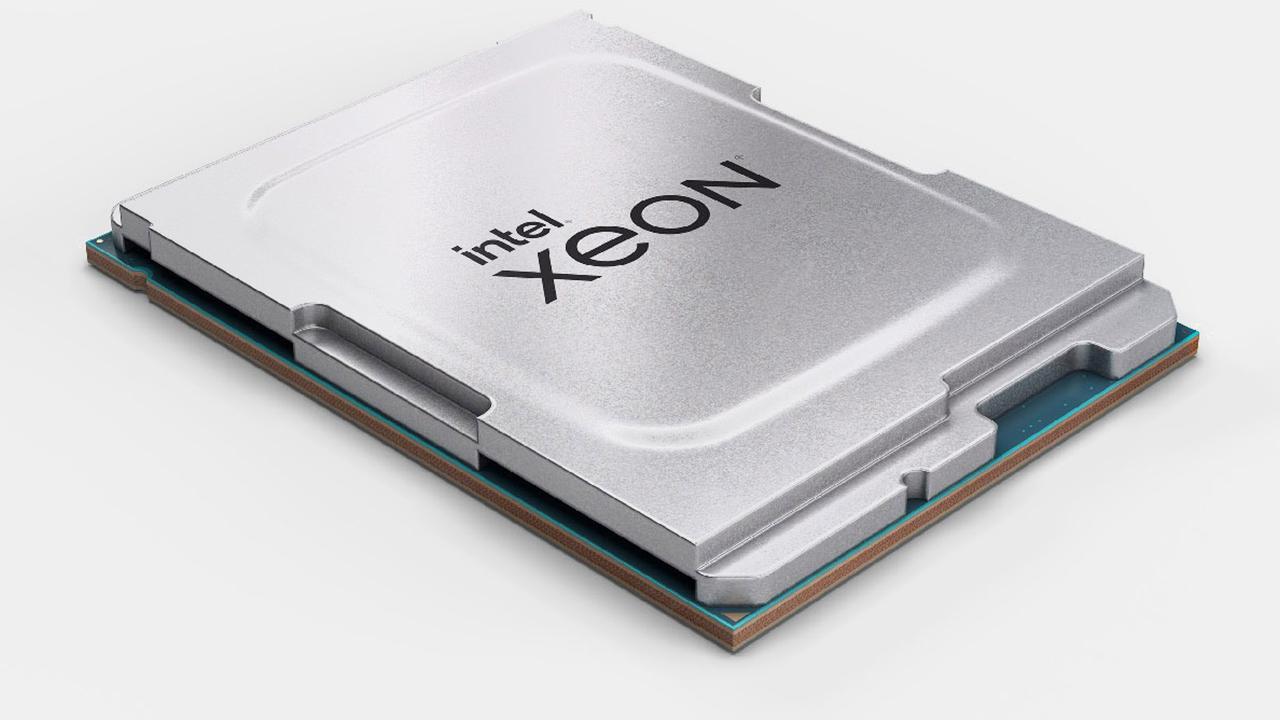Intel Xeon W-3595X 60-core CPU overclocked to 5.80 GHz — 1 GHz over the default 4.8 GHz boost clock
Good overclocking potential?

Ever since AMD and Intel repositioned their Ryzen Threadripper and Xeon W (well, Core Extreme) processors from high-end desktops to workstations, their overclocking capability was largely forgotten, with only a few professional overclockers trying to push those CPUs to their limits. This week, overclocker SkyWalkerAMD managed to overclock Intel's 60-core Xeon W9-3595X (Sapphire Rapids Refresh) processor to 5.80 GHz, which is a noticeably better result when compared to its predecessor. There is a catch, though.
SkyWalkerAMD reveals little about how he managed to push Intel's latest extreme workstation-bounded Xeon W9-3595X to 5.80 GHz. The only things that he officially disclosed are that he increased the voltage of the CPU to 1.234V, he used an Asus Pro WS W790E-Sage SE motherboard equipped with 256 GB of DDR5 memory, and that the CPU temperature was 70 degrees Celsius. The latter suggests that he used a very powerful water-cooling loop. However, his formal HWbot submission indicates that the CPU voltage was 1.27V, the CPU temperature was 58 degrees Celsius under load, and he used an all-in-one liquid cooling.
Both 5.70 GHz and 5.80 GHz are remarkable results for Intel’s Xeon W9-3595X processor, which has a default frequency of 2.0 GHz and a Turbo Boost Max 3.0 clock of 4.80 GHz. Compared to Intel’s Xeon W9-3495X, the new W9-3595X manages to hit an overclock 300 MHz to 800 MHz higher, making it a standout overclocking performer. There is a major catch, though.
SkyWalkerAMD used the SuperPi 32M program, a single-threaded application that calculates Pi to a specified number of digits (in the case of 32M), to test the CPU’s stability. Because it is not parallelized, it cannot take advantage of the 56 – 60 cores featured by Intel’s Xeon W9 processors. Therefore, it remains to be seen how well the new CPU will overclock with all 60 cores active.
It is expected to push Intel’s Xeon W9 processors to their limits with all active cores. Last year, Elmor, a professional overclocker, pushed an Xeon W9-3495X using liquid nitrogen cooling to a whopping 5.50 GHz frequency using LN2. When cooled to -92.8 degrees Celsius (-135 degrees Fahrenheit), the CPU scored 132,220 points in Cinebench R23, which is a remarkable result. However, this performance comes at a steep cost: the overclocked CPU consumed a staggering 1,881W of power at 5.50 GHz, requiring two 1,600W PSUs to keep it running.
Get Tom's Hardware's best news and in-depth reviews, straight to your inbox.

Anton Shilov is a contributing writer at Tom’s Hardware. Over the past couple of decades, he has covered everything from CPUs and GPUs to supercomputers and from modern process technologies and latest fab tools to high-tech industry trends.
-
emike09 I've been really curious about overclocking on this series. That's a pretty impressive result, even if it wasn't stressed properly under all-core load. I'm eying the w5-2565X (18-core, 3.2Ghz base) in particular since I don't need that many cores and would rather have a higher operating frequency. Cost is also within budget, I'd upgrade used later down the road if needed. Haven't been able to find any reports on how the w5-2565X overclocks.Reply
My i9-10920X has been overclocked since day 1 to 4.8Ghz all-core (stock 3.5GHz) and has been a champ for stability. HEDT / Workstation chips can take a mighty overclock. However, it's almost 5 years old and struggles compared to the latest offerings. The increased IPC on a newer platform would be appreciated. -
das_stig Pointless just bragging rights. Your average user don't need faster CPUs, we ned energy efficient, secure and smarter working CPUs with bloated software not being a limiting force. I can't honestly say I am more productive now with W11+16 cores+64GB+1TB NVMes, than I was back in W7-+4 cores+8GB+256GB SSD on my daily driver.Reply -
jp7189 Reply
I agree its pointless to talk about single core frequency on a chip like this, but there are workloads that will eat an unlimited amount of CPU resources for hours or days. Cutting those run times can be worth a lot. Imagine a $75/hr data scientist that sets up an experiment and then takes the rest of the week "off" while they wait on a result.das_stig said:Pointless just bragging rights. Your average user don't need faster CPUs, we ned energy efficient, secure and smarter working CPUs with bloated software not being a limiting force. I can't honestly say I am more productive now with W11+16 cores+64GB+1TB NVMes, than I was back in W7-+4 cores+8GB+256GB SSD on my daily driver. -
das_stig Bad example, you wouldn't use a workstation even overclocked like this but a cluster to number crunch the result and benefit from the cpu power/watt/£ equation and I bet the scientist has better things to do while waiting.Reply
